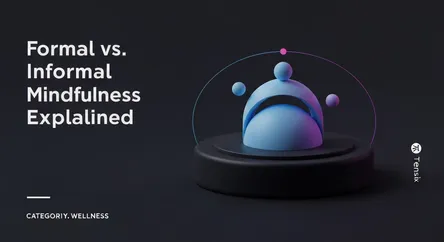Wellness
Formal vs. Informal Mindfulness Explained

Understand the difference between formal and informal mindfulness to easily integrate this powerful wellness tool into your daily routine.
What is it?
Formal and informal practices are two ways to cultivate mindfulness. Formal practice involves setting aside a specific time for structured meditation. Examples include sitting meditation focused on the breath, a body scan meditation, or mindful yoga. It's an intentional period dedicated solely to training your attention.
Informal practice, on the other hand, is about weaving mindfulness into everyday activities. This means bringing full awareness to routine actions like eating, walking, washing dishes, or even brushing your teeth. Instead of operating on autopilot, you pay deliberate attention to the sensations and experiences of the present moment.
Why is it trending?
The distinction is trending as more people seek practical ways to manage stress and improve wellbeing. While the idea of a dedicated formal meditation practice can feel intimidating or time-consuming for beginners, informal practice offers an accessible entry point. It demystifies mindfulness by showing it can be integrated into any part of the day, making the benefits feel more attainable. This dual approach is popular because it allows individuals to build a consistent mindfulness habit that fits their lifestyle, whether through dedicated sessions or mindful moments during a busy day.
How does it affect people?
Both practices offer significant benefits. Formal practice is like a workout for the brain, improving focus, concentration, and emotional regulation. It helps build a strong foundation of self-awareness and can reduce stress and anxiety.
Informal practice helps carry these benefits into daily life, increasing present-moment awareness and reducing mind-wandering. It allows people to deal with stress as it arises and can improve relationship satisfaction through more mindful interactions. By combining both, individuals can build core mindfulness skills and apply them in real-time, leading to less reactivity and a greater sense of calm and clarity throughout the day.